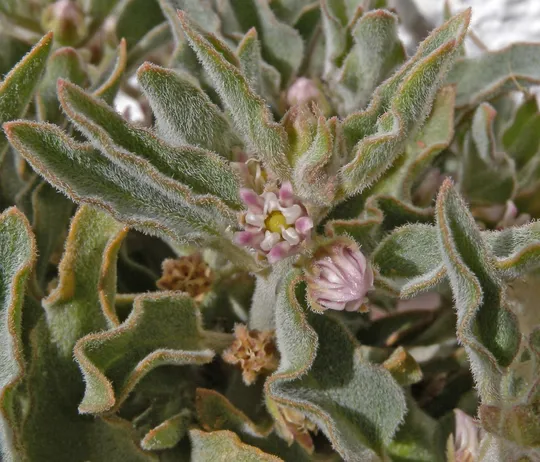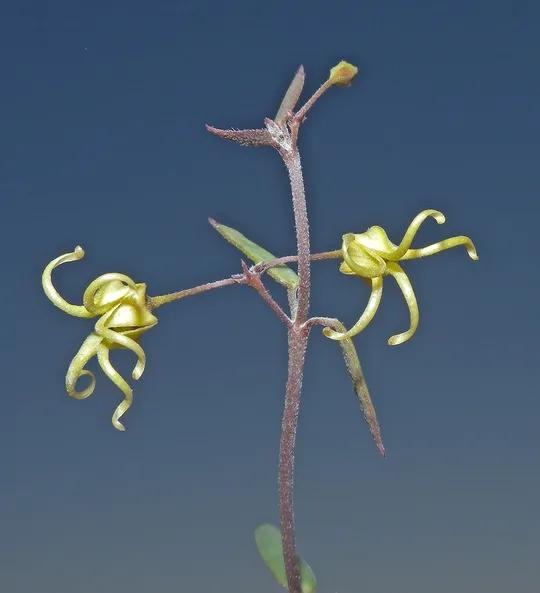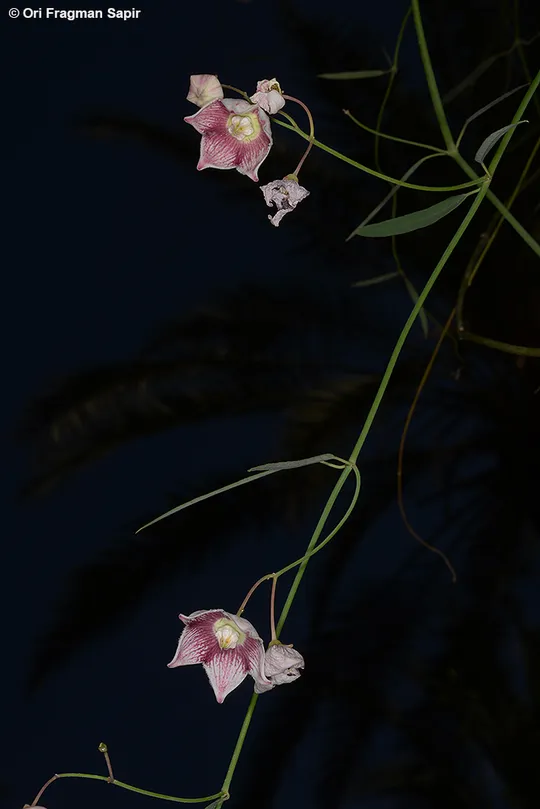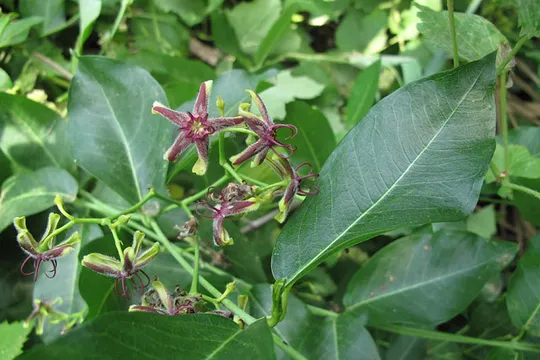Khimp
Leptadenia pyrotechnica
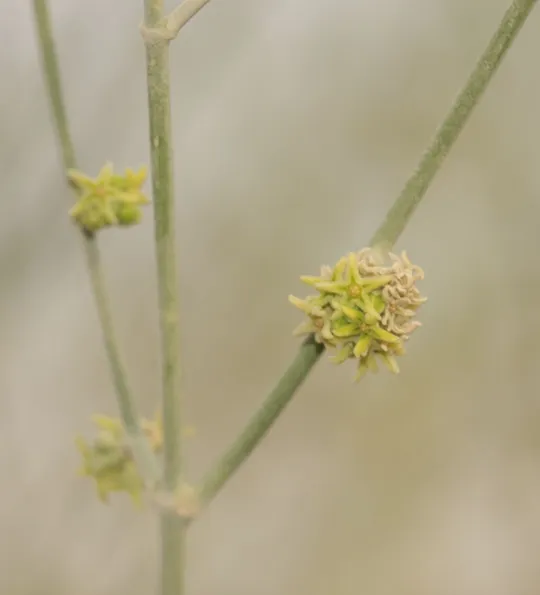
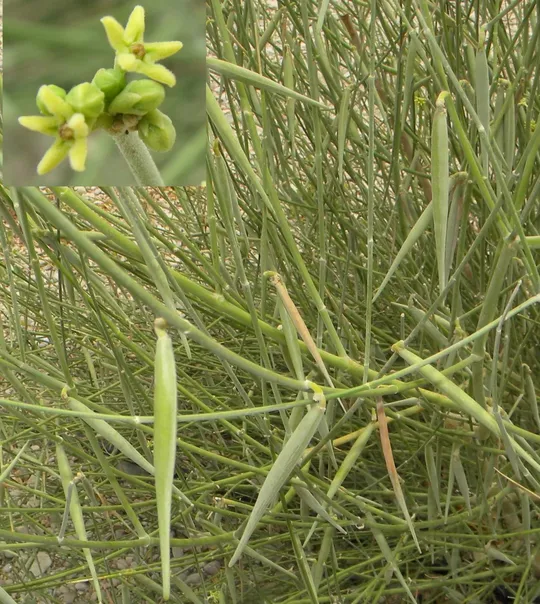
Leptadenia pyrotechnica
is a forage shrub consumed mainly by camels. In the desert regions of India and
Pakistan it is used for afforestation. The branches are used for roofing huts
and in the Sahel in Africa the bark is used for making ropes and nets to catch
fish and for basket weaving. The fruit has medicinal uses. In Arabia, a cream
made from the plant’s resin is used to treat blisters; chewing young stems is
used instead of a toothbrush. L. pyrotechnica is believed to be one of
the eleven incense spices used in the Temple (Kislev and Simchoni, 2006).
According to the literature, lighting a fire in the branches of the bush causes
explosive sounds and produces a thick smoke. The European scientists that first
described the species claimed L. pyrotechnica has nitrate and other
chemical concentrations in its stems that cause explosions when set on fire. This
is the source of the species' scientific name "pyrotechnica", which
means making or displaying fireworks.
Löw (1926), a well-known researcher of Biblical plants, associated
Leptadenia, a shrub that grows mainly in Arabia and the Red Sea coast, with
the incense spice termed "that which causes smoke to rise". Kislev
and Simchoni did not find any evidence to support this theory.
Leptadenia pyrotechnica was collected
twice in Israel, in the 1940s and '50s: at En Hatseva in the northern Arava and
near Masada in the Dead Sea area. It probably became extinct in 1959 and has
not been found in Israel since. Today there are planted L. pyrotechnica shrubs near the
ancient synagogue at En Gedi. In Jordan too,
L. pyrotechnica shrubs
are inadvertently destroyed, due to the rapid agricultural development in the
area of Safi and in the northern Arava.
L. pyrotechnica grows in a
number of desert canyons openings in Edom and southern Moab – Wadi Dahal, Wadi
Kune and Wadi Jaffna north of Wadi Feifa. A number of L. pyrotechnica shrubs are planted in the En Gedi
Nature Reserve, particularly in the area used for landscape and vegetation
restoration in abandoned agricultural areas, according to the management
program that was approved (Belcher, 2010).
In Israel – oases and stream banks in hot areas. In
Africa, India and Pakistan – in sandy habitats.
Leptadenia is a tropical genus that includes four
species, all Retama-like shrubs with green branches, found
in Africa. Only one species L.
pyrotechnica extends eastwards to southwest Asia and on to India.
Leptadenia pyrotechnica was extremely
rare in Israel even before its extinction. The reasons for its extinction from
Hatseva and Masada areas are not known with certainty. It should be noted that
the plants that formerly grew in Israel constitute marginal populations
isolated from the distribution centers in Egypt, Africa and India. Repeated
periods of consecutive dry years may have caused the gradual death of L. pyrotechnica and led to the
collapse of its populations. In Jordan too, the northernmost specimen of L. pyrotechnica was recently
destroyed by earthworks at the entrance of the Jodera canyon. Earthworks to
divert stream water and agricultural development are being conducted in recent
years in most of Edom’s canyons and all five known L. pyrotechnica sites are severely endangered.
The species is
apparently not globally endangered.
Attempts should
be made to grow Leptadenia
pyrotechnica in reserves and desert refuge gardens in the Dead Sea
Valley and Arava settlements in order to subsequently restore this species at
the previously known sites in the Dead Sea and Arava area, as well as in
additional sites in the general distribution area of the species. Hatseva,
where L. pyrotechnica once grew and
which is close to Wadi Dahal in Jordan where there are populations growing
today, is a recommended site. The plants should be brought from nearby
populations in Jordan.
The global
distribution of Leptadenia
pyrotechnica extends
throughout hot desert-tropical areas. In Africa, it grows in Egypt and in the Sahel
belt bordering on the Sahara: Mauritania, Senegal, Mali, Niger and Nigeria. It is
also found in the Arabian Peninsula, in India and Pakistan.
Leptadenia
pyrotechnica is a
tall Retama-like shrub that once grew at a few sites in the hot dry
areas in the Dead Sea Valley and the northern Arava and is now extinct from
Israel. It is not globally endangered. It should be reintroduced to the Dead
Sea and Arava areas from source populations in Jordan.
בלכר מ. 2010. המשימה: השבת עצי עין גדי. בשביל הארץ, 36: 26-28.
כסלו, מ. ושמחוני, א. 2006. מעלה עשן כלשהוא. סיני – כרך קמ, פ-פ"ה.
Batanouny K.H. and. Abdel Wahab A.M, 1972. Eco-physiological studies on desert plants VIII – Root penetration of Leptadenia pyrotechnica (Forssk.) Decne. in relation to its water balance. Oeogia 11: 151-161.
L?w' I. 1926. Die Flora der Juden I. Wien und Leipzig
Current Occupancy Map
| 1000 squre meter pixel | 5000 squre meter pixel | 10000 squre meter pixel | |
|---|---|---|---|
| number of observations | 0 | 0 | 0 |
| in total pixels | 0 | 0 | 0 |
| Family | Asclepiadaceae |
| Classification | On the endangered species list |
| Ecosystem | Extreme Desert |
| Chorotype | Sudanian – Saharo-Arab |
| Conservation Site | Return to shelter gardens in the Dead Sea area |
| Rarity |
1
6
6
|
|---|---|
| Vulnerability |
0
4
4
|
| Attractiveness |
0
0
4
|
| Endemism |
0
0
4
|
| Red number |
1
-1.0
10
|
| Peripherality | S |
| IUCN category | DD EW EX LC CR EN VU NT |
| Threat Definition according to the red book | Extinct |
 Based on:
Based on:
